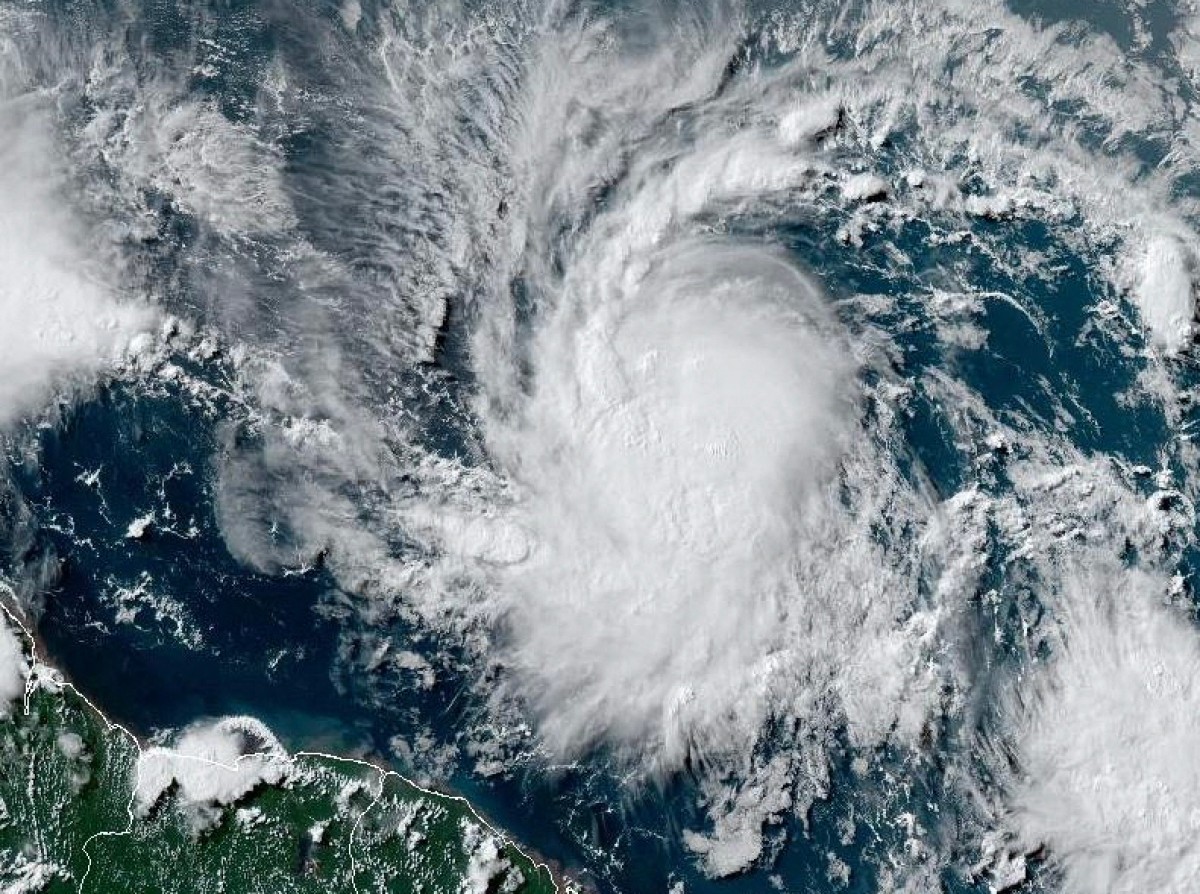Beryl’s Formation and Path: National Hurricane Center Beryl
:quality(70)/cloudfront-us-east-1.images.arcpublishing.com/cmg/AWHDX4GIS6ELRDN2KSNZFDACQU.jpg)
National hurricane center beryl – Beryl emerged as a tropical storm on July 5, 2023, due to a combination of favorable atmospheric conditions. Warm ocean temperatures in the tropical Atlantic provided the energy for its development, while low wind shear allowed it to organize and intensify.
National Hurricane Center Beryl don give update say Hurricane Beryl don reach Florida. Di hurricane don bring heavy rain, strong wind and flooding to di state. You fit check hurricane beryl florida for more information about di hurricane and how e dey affect Florida.
Beryl’s path has taken it on a westward trajectory across the Atlantic Ocean. It originated near the Cape Verde Islands and is expected to continue moving west-northwest towards the Caribbean Sea. The storm’s exact trajectory and intensity may fluctuate as it interacts with the surrounding environment.
The National Hurricane Center is monitoring Tropical Storm Beryl, which is expected to strengthen into a hurricane in the coming days. For the latest spaghetti models on Beryl’s potential path, visit tropical storm beryl spaghetti models. The National Hurricane Center will continue to provide updates on Beryl as it progresses.
Origin
Beryl formed near the Cape Verde Islands, a group of islands located off the coast of West Africa. The warm waters and favorable atmospheric conditions in this region often contribute to the development of tropical storms and hurricanes.
Expected Trajectory
Beryl is projected to continue moving west-northwest across the Atlantic Ocean. Its path is expected to bring it near the Caribbean Sea, where it could potentially impact islands and coastal areas. The storm’s intensity and exact trajectory may change as it interacts with the surrounding environment, including changes in wind patterns and ocean temperatures.
Impacts of Hurricane Beryl

Hurricane Beryl has the potential to cause significant impacts on coastal communities as it approaches landfall. The primary threats associated with the storm include storm surge, flooding, and wind damage.
Storm Surge
Storm surge is a dangerous wall of water that can inundate coastal areas during hurricanes. The surge is caused by the strong winds of the storm pushing water towards the shore. Storm surge can cause severe flooding, property damage, and loss of life.
- Residents in coastal areas should be aware of the risk of storm surge and evacuate if necessary.
- Businesses should secure their property and prepare for potential flooding.
Flooding
Hurricane Beryl is expected to bring heavy rainfall to affected areas. This rainfall can cause flooding, which can damage property and infrastructure. Flooding can also make it difficult for emergency responders to reach affected areas.
- Residents should be prepared for flooding and have an evacuation plan in place.
- Businesses should secure their property and prepare for potential flooding.
Wind Damage
Hurricane Beryl is expected to bring strong winds to affected areas. These winds can cause damage to buildings, trees, and power lines. Wind damage can also lead to power outages and other disruptions.
- Residents should secure their property and prepare for potential wind damage.
- Businesses should secure their property and prepare for potential wind damage.
NHC Monitoring and Response

The National Hurricane Center (NHC) plays a crucial role in monitoring and responding to hurricanes like Beryl. It is the primary source of hurricane forecasts and warnings for the United States and its territories.
The NHC uses a variety of tools and technologies to monitor hurricanes, including satellite imagery, radar, and aircraft reconnaissance. This data allows the NHC to track the storm’s path, intensity, and potential impacts.
Forecasting and Warning Systems
The NHC issues a variety of forecasts and warnings for hurricanes, including:
- Tropical Storm Watches are issued when there is a possibility that tropical storm conditions (winds of 39 mph or higher) could occur within the next 48 hours.
- Hurricane Watches are issued when there is a possibility that hurricane conditions (winds of 74 mph or higher) could occur within the next 48 hours.
- Tropical Storm Warnings are issued when tropical storm conditions are expected within the next 36 hours.
- Hurricane Warnings are issued when hurricane conditions are expected within the next 24 hours.
Coordination with Local Emergency Management Agencies, National hurricane center beryl
The NHC works closely with local emergency management agencies to prepare for and respond to hurricanes. This coordination includes:
- Providing local officials with forecasts and warnings.
- Assisting with evacuation planning and execution.
- Coordinating disaster response efforts.